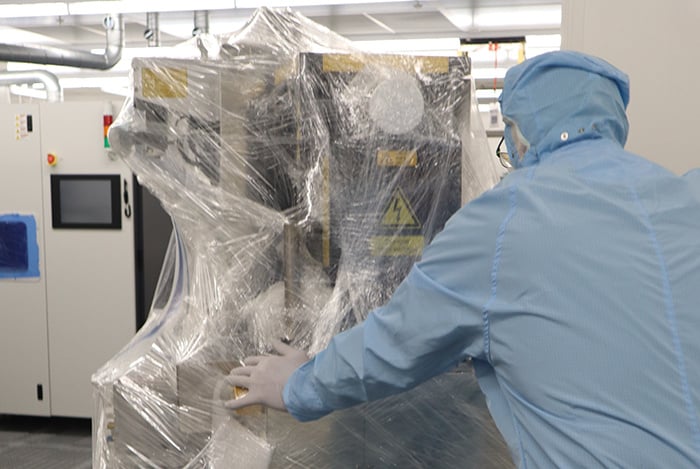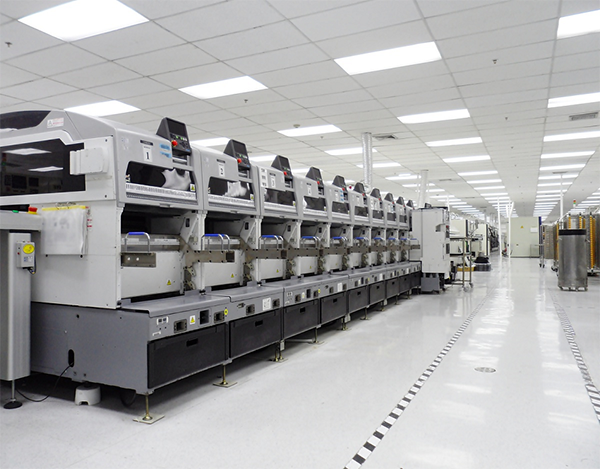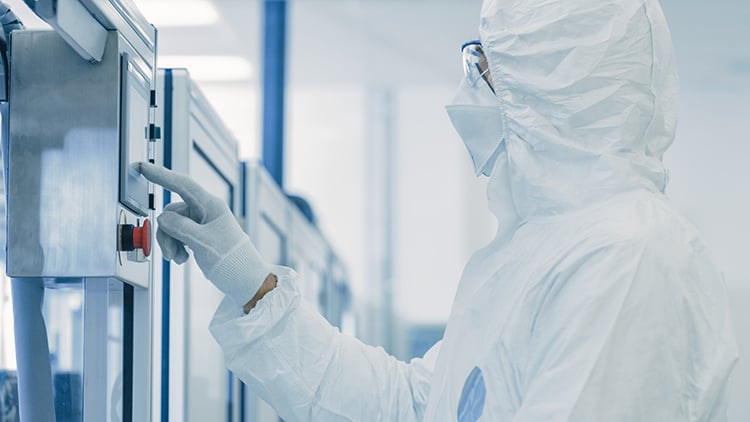Specialist Engineer Brian Fletcher’s 5 Expert Tips for Factory De-installations
Factory de-installations are never simple. But they’re a lot easier when you do them right.
We're actively recruiting for a range of roles across sales, engineering, IT and warehouse. Check our careers page to see open positions including apprenticeships.

Whether you’re moving a single piece of equipment or an entire production line, our trusted team of engineers can support every step of your move, from rigging to end-to-end relocation support across the globe.

5 min read
Admin Jul 29, 2025 8:15:00 AM
Table of Contents
Moving and installing high-technology equipment is always a challenging task, but when you add a cleanroom environment to the mix, things get even more complex. Cleanrooms are designed to maintain exceptionally controlled environments to protect sensitive processes, requiring a unique set of practices to ensure equipment is moved and installed without compromising the cleanroom's integrity or the functionality of your tools.
In this article, we will outline key considerations for moving and installing equipment in cleanroom environments, from adhering to stringent cleanliness requirements to precise calibration and testing for sensitive tools like semiconductor ion implanters.

Cleanrooms operate under strict standards, such as the ISO 14644-1, which classifies them based on the number of allowable particles in the air. Exceeding these limits can severely affect product quality, disrupt processes, and even damage equipment. Therefore, maintaining cleanliness is critical when moving and installing equipment.
The very act of moving equipment generates particles—friction between surfaces, vibrations, and human activity can release contaminants into the environment. Bringing external equipment into the cleanroom adds another layer of risk if that equipment isn’t properly decontaminated.
To mitigate these risks:
Every cleanroom has different cleanliness standards depending on its classification, so all personnel must be aware of the specific requirements of the cleanroom they’re working in.
Maintaining a stable environment is critical for cleanrooms. This involves controlling particles, temperature, humidity, and air pressure to ensure that sensitive tools, such as ion implanters, operate within their required specifications.
Small changes in temperature can cause materials to expand or contract, affecting product quality or causing equipment malfunctions. Similarly, fluctuations in pressure can allow contaminants from lower-grade areas to infiltrate the cleanroom.
To ensure environmental control:
Collaborating with a team experienced in cleanroom operations and environmental control can significantly reduce the risk of disruption and ensure your equipment functions correctly.

Every successful cleanroom move begins with meticulous planning. This involves understanding both the intricacies of the equipment and the cleanroom environment.
The planning phase should include:
With a detailed plan in place, you can anticipate and overcome challenges, ensuring that the equipment move is both smooth and safe.
Cleanroom environments present unique technical challenges that go beyond standard equipment moves. Engineers and technicians must navigate restricted entry points, ensure precise alignment, and use specialised tools—all while adhering to strict cleanliness protocols.
Some technical challenges you may encounter include:
Overcoming these challenges requires a team of highly skilled engineers and technicians who have experience working in cleanroom environments. They should be familiar with the specific requirements of the cleanroom and the equipment being installed.

For complex tools like semiconductor ion implanters, calibration and testing are essential components of the installation process. Proper calibration ensures that the equipment functions within specified tolerances, while thorough testing verifies that it meets performance standards.
The calibration and testing process includes:
Calibration and testing are critical to ensuring that your equipment performs as expected in the cleanroom environment, maintaining both the integrity of the process and the quality of the final product.
Moving and installing equipment in cleanrooms presents safety risks that go beyond standard working conditions. Cleanroom environments require specialised garments, such as suits, hoods, gloves, and shoe covers, to prevent contamination. However, these garments can also limit range of motion and peripheral vision, increasing the risk of accidents when moving large, heavy equipment.
That’s why safety training is crucial. Every worker involved in the move must be equipped with the knowledge and skills to operate safely within the cleanroom. Training should cover:
Comprehensive training ensures that your team is well-prepared to move and install equipment in cleanrooms without compromising safety or cleanliness.
Given the complexities of moving and installing equipment in cleanroom environments, collaboration with cleanroom and equipment experts is vital. These experts can provide guidance on how to maintain environmental control, adhere to cleanliness standards, and ensure that your equipment is calibrated and tested correctly.
At IES, we’ve been helping companies move and install complex equipment in cleanrooms since 1991. Our team has the experience and expertise to handle the most challenging cleanroom installations, from semiconductor ion implanters to other high-technology tools.
Moving and installing complex equipment in cleanroom environments demands a meticulous approach to cleanliness, environmental control, planning, and safety. Whether you're working with semiconductor ion implanters or other high-technology tools, partnering with experts who understand the nuances of cleanroom standards and equipment installation is critical.
At IES, we’ve been helping semiconductor organisations move and install complex equipment since 1991. Our experienced team ensures that every aspect of the move, from planning to calibration, is handled with the utmost precision.
Ready to discuss your next project? Get in touch.
Stay up to date with the latest news and resources from our experts.
Factory de-installations are never simple. But they’re a lot easier when you do them right.

An ‘end-to-end’ provider means the supplier of a solution which encompasses an operation from start to finish.

You’ve spent the past few weeks relocating, installing and setting up a piece of high-technology capital equipment.